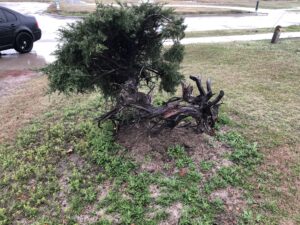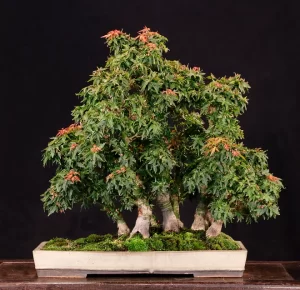
Collecting Bonsai
What is it about Bonsai that so thrills the viewer? Is it the fact that a Bonsai looks so old?
Could it be the “how does it grow in that small container?” How about the simple beauty of it?
What is it about Bonsai that so thrills me? They say the first Bonsai were brought back from the wild. That a man, one day, so admired a tree along his way that he returned and dug it up. He then brought it home, planted it in a pot, and admired it for years to come. Why?
I have always enjoyed nature; unfortunately, I was not born an Indian in the late 18th century. I am, though, a 21st-century man who lives in the city, and with Bonsai, I can keep a part of me in touch with nature. I also enjoy the peace they bring.
Collecting Bonsai is a chance for me to get out into the woods for some long walks.
I am consistently observing the environment around me. The work begins when I spot a tree that looks like it has the potential for Bonsai. Digging trees is hard work, so be prepared. I take very little with me: a shovel, pruners, heavy-duty trash bags, and duct tape for wrapping up the root ball. Sometimes I bring a folding saw with trees like elm, willow, hawthorn, etc. I bare root and toss it in the bag. I water them if they are dry. Once they are wrapped in plastic, they stay moist till I get home. With evergreens, though, I like to keep a small root ball intact. The roots of evergreens are more sensitive. Oak and beech also need to be collected with plenty of roots.
Once you find a suitable specimen, dig it out. I usually start digging just outside the drip ring of the foliage. There are a lot of roots in this area. I dig a trench around the tree so I can start to dig under the tree till I sever all the roots. I then break up the soil in the root ball, so it falls off the roots. I remove enough soil till I can lift the tree comfortably. I put the roots in a trash bag, tape it up, and carry the tree to the van.
I place the trees in a big tub to soak in KLN when I get home. They can soak for up to 30 hours, giving me a chance to catch up. Before I soak the trees, I prune the trunk and branches and make new cuts on the roots – clean cuts with sharp tools. The cuts on the roots are where the callous tissue will form. It is from this callous tissue that new roots will form. KLN helps the callous tissue to develop. I never wash away all the old soil at the first potting. I also like adding some old soil back into the pot. The reason for this is to retain the beneficial Microryza in the soil. The care of the trees after potting is critical. The trees should be placed out of the wind in partial shade. High humidity and air movement are essential. Be careful not to over-water. Cut roots cannot take up water. Till new roots develop, don’t water too much! After 2-3 weeks, I place trees in full sun. It would be best to ease the trees into a little more light each day. I prefer to move them just once. I can also keep a very close eye on their condition.
Collected trees are left to grow for up to 2-5 years till vigor is seen. You should begin to establish your branches and apex. Feed with high nitrogen fertilizer, which will maximize growth. In a few years, the tree becomes established. Now it is time to repot. Move into a slightly smaller Bonsai growing container. Continue to fertilize with water-soluble and time-release. Also, keep refining the branches. You will pot the tree into a finished container in a few more years.
You can rush the tree into a finished pot quicker, but you must also be willing to see the tree die. Besides, there is no hurry because the branches take at least three years to develop. The branches will be ramified when the tree is ready for a finished pot.
I would be remiss if I failed to mention that getting permission from the landowner is a good idea. Most of the time, people will let you dig trees on their property. I usually offer a small token price for the tree(s) depending on how nice it is, or they are. If you see signs for new developments, you should call and see if you could go in before they level the place. Usually, they need a waiver.
Many great Bonsai began as collected trees. You can collect them here in the city. Or when you go on vacation. Keep your eyes open. Good hunting to you all.
February 2001 Philip Malhiot
Editor’s Note: Lightly edited and updated with Phil’s approval.



